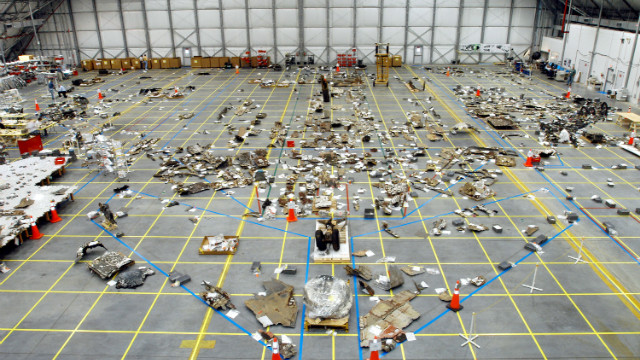
Neither NASA, nor Morton Thiokol (the SRB manufacturer), addressed the issue. Test data since 1977 had revealed a potentially catastrophic flaw in the SRBs' O-rings. The commission criticized NASA's organizational culture and decision-making processes that had contributed to the accident. President Ronald Reagan created the Rogers Commission to investigate the accident. The disaster resulted in a 32-month hiatus in the Space Shuttle program. The orbiter had no escape system, and the impact of the crew compartment at terminal velocity with the ocean surface was too violent to be survivable. The exact timing of the deaths of the crew is unknown, but several crew members are thought to have survived the initial breakup of the spacecraft. The crew compartment and many other fragments from the shuttle hi recovered from the ocean floor after a three-month search-and-recovery operation. Both SRBs detached from the now-destroyed ET and continued to fly uncontrolled until the range safety officer destroyed them. Traveling at a speed of Mach 1.92, Challenger was thrown sideways by the SRB's impact with the intertank, after which aerodynamic forces tore the orbiter apart. Its contents vaporized and ignited, but this did not directly cause the orbiter's destruction. The booster then rotated and pushed its upper end into the ET's intertank section, causing the inner structures of the tank to collapse. Shortly after liftoff, the seals were breached, and hot pressurized gas from within the SRB leaked and burned through the aft attachment strut connecting it to the external propellant tank (ET). The record-low temperatures of the launch had stiffened the rubber O-rings, reducing their ability to seal the joints. The cause of the disaster was the failure of the two redundant O-ring seals in a joint in the shuttle's right solid rocket booster (SRB). The spacecraft disintegrated 46,000 feet (14 km) above the Atlantic Ocean, off the coast of Cape Canaveral, Florida, at 11:39 a.m.

The crew was scheduled to deploy a communications satellite and study Halley's Comet while they were in orbit, in addition to taking school teacher Christa McAuliffe into space the latter resulted in schoolchildren and students across the United States watching the disaster live on television. The mission, designated STS-51-L, was the tenth flight for the orbiter Challenger and the twenty-fifth flight of the Space Shuttle fleet. It was the first fatal accident involving an American spacecraft in flight.

The Space Shuttle Challenger disaster was a fatal incident on January 28, 1986, in the United States space program where the Space Shuttle Challenger (OV-099) broke apart 73 seconds into its flight, killing all seven crew members aboard.


 0 kommentar(er)
0 kommentar(er)
